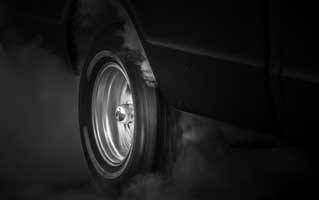 Tyre makers are literally being pushed to “reinvent the wheel” as regulators turn their scrutiny to pollution from tyres that is set to surge with the rise of electric vehicles (EVs) and threatens to undermine those cars’ green credentials, according to a report by news agency Reuters.
Tyre makers are literally being pushed to “reinvent the wheel” as regulators turn their scrutiny to pollution from tyres that is set to surge with the rise of electric vehicles (EVs) and threatens to undermine those cars’ green credentials, according to a report by news agency Reuters.
When tyres make contact with the road, tiny particles are abraded and emitted. The extra weight of EVs linked to their batteries means this little-discussed form of pollution – from an estimated 2 billion tyres/year produced globally – is becoming a bigger problem.
Major producers, including Goodyear, Bridgestone, Michelin and Continental, are also trying to fend off competition from cheaper Chinese rivals.
“It’s not quite a perfect storm,” said Gunnlaugur Erlendsson, CEO of UK-based start-up Enso, which has developed more durable tyres specifically for EVs and rents out tyres that it takes back to recycle at the end of life. “But it’s close.”
Tyre-makers are racing to get ahead of emissions rules and find alternatives.
Recent studies have revealed the toxicity of tyres, which typically have 200 components and compounds, many of which are generated from crude oil. While critics claim that tyres contain several hazardous and cancer-causing substances, there is only general agreement on one: 6PPD, an antioxidative and antiozonant found in all tyres that reduce cracking. The first state to require tyre manufacturers to provide evidence that they are looking for a replacement for 6PPD, a degraded form discovered in South China’s human urine, is expected to be California this year.
The European Union’s upcoming Euro 7 emission regulations will set new tyre standards.
Compounding those challenges, manufacturers will need to develop tyres that emit less for heavy EVs, which Michelin and Goodyear have reported can wear out tyres up to 50% faster.
But Michelin, Continental and Pirelli told Reuters they are pursuing alternatives to 6PPD, with Michelin and Continental adding collective industry action may be necessary to find solutions.
Asked about Euro 7 regulations, Michelin said it wants worldwide standards to squeeze the higher emitting tyres, which are usually cheaper, out of the market. Continental advocates a global abrasion standard with transparent labelling for consumers.
Nick Molden, CEO of British-based testing specialist Emissions Analytics, said the “dirty end” of the list of tyres the company has tested are “cheap Chinese imports” common in the European market.
Data provided to Reuters by Emissions Analytics shows new tyres developed so far are unlikely to solve the problem.
For example, while tests carried out on Continental bicycle tyres made using dandelions show a 24.5% drop in carcinogenic aromatics – which help cars hug the road – the chemicals in the particles they emit are similarly toxic overall, Molden said.
Continental said its dandelion tyres were developed to find a sustainable form of natural rubber, and addressing 6PPD was a separate focus.
Developed during the Korean War, research shows that when 6PPD reacts with oxygen or ozone it forms 6PPD-quinone, which has been blamed for mass deaths of Coho salmon off the US West Coast.
Californian regulators say 6PPD’s impact on human health is unclear, but are finalising documents that could require tyre manufacturers to analyse safer alternatives.
The tyre industry said finding a replacement for 6PPD is hard because any new chemical must prevent tyres degrading and cracking without affecting other attributes.
Enso’s CEO Erlendsson said the industry could have a solution on the market within five years if pushed, though at a price.
Shifting the focus from tailpipe emissions, EU and UN regulators are working on Euro 7 regulations to curb emissions from brakes and tyres. EU lawmakers say they could be agreed on as soon as next year.
Particles from tyres are expected to be the largest source of microplastics potentially harmful to aquatic life by 2050, data prepared for the European Commission shows.
Michelin estimates that globally tyres emit around 3 million tonnes of particles annually – and create another 3 million tonnes of particles from road surfaces, its technical and scientific communications director Cyrille Roget said.
Michelin’s tests show that if you drive 200,000 km a year on its tyres, it’ll emit about 1.5 kg of particles, compared to a market average of 3.6 kg.
The worst-performing rival tyres Michelin has tested so far emit around 8 kg per year.
If Euro 7 were used to stop sales of the highest-emitting tyres, it would remove a lot of particles from the market, says the report.
Michelin and Continental said they are already focused on making their tyres more durable – Michelin cut its tyre emissions 5% between 2015 and 2020.
But Emissions Analytics’ Molden said the shift to EVs means tyre-makers will be forced to develop more durable tyres – a tough challenge without natural rubber, which would be difficult to develop sustainably enough to support the whole industry.
As part of its efforts to be as sustainable as possible, Enso has a recycling deal with Norwegian company Wastefront.
“The advent of the EV is the time to make this change,” to improve tyres,” Enso’s Erlendsson said.
